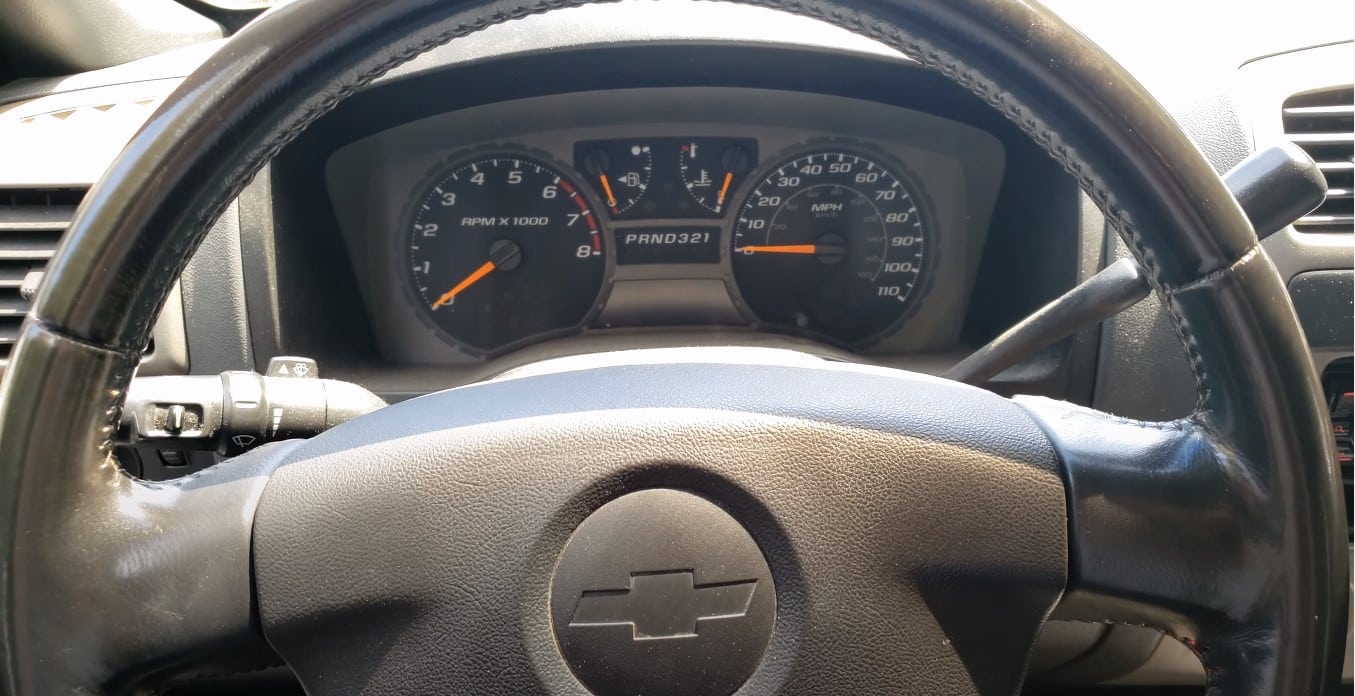Why does steering wheel shake take center stage? It’s a question that plagues many drivers, a disconcerting sensation that can range from a subtle tremor to a full-blown vibration. This unsettling phenomenon is often a sign of underlying mechanical issues, demanding attention before it escalates into a major safety hazard. From worn tires to suspension problems, the reasons behind a shaking steering wheel are multifaceted, and understanding the root cause is crucial for a safe and enjoyable driving experience.
The shaking sensation can manifest in various ways, depending on the underlying cause. Sometimes it’s speed-dependent, intensifying as you accelerate. Other times, it might occur only at specific speeds, or it could be a constant tremor, regardless of your velocity. This variability highlights the importance of accurate diagnosis, as the solution will vary depending on the source of the problem.
Causes of Steering Wheel Shake

Have you ever been cruising down the road, enjoying the open highway, when suddenly your steering wheel starts to shake? It can be a disconcerting experience, leaving you wondering if your car is about to fall apart. But fear not, steering wheel shake is a common problem that can usually be fixed with some simple repairs.
Common Causes of Steering Wheel Shake
Steering wheel shake can be caused by a variety of factors, but some of the most common culprits include worn tires, suspension issues, wheel alignment problems, and brake rotor warping. These issues can manifest as shaking in different ways, depending on the underlying cause.
- Worn tires: Uneven tire wear, such as cupping or feathering, can cause a vibration that becomes more noticeable at higher speeds. The uneven wear pattern can lead to a bouncing effect, which transmits to the steering wheel.
- Suspension issues: Worn suspension components, such as tie rod ends, ball joints, control arm bushings, and shock absorbers, can cause a shaking sensation that can be felt in the steering wheel. These components are responsible for maintaining the vehicle’s stability and handling, and when they wear out, they can cause the suspension to become loose and wobbly.
- Wheel alignment problems: Incorrect wheel alignment can cause the tires to wear unevenly, leading to steering wheel shake. A misaligned wheel can also cause the car to pull to one side, which can further exacerbate the shaking.
- Brake rotor warping: Warped brake rotors can cause a pulsating sensation in the steering wheel, especially when braking. This happens because the warped rotor creates an uneven braking force, which can cause the vehicle to vibrate.
How Steering Wheel Shake Manifests
Steering wheel shake can occur at different speeds, depending on the underlying cause. For example, worn tires may cause a shaking sensation at higher speeds, while warped brake rotors may cause a shaking sensation when braking.
- Speed-dependent shaking: This type of shaking is usually caused by worn tires, suspension issues, or wheel alignment problems. The shaking may become more noticeable at higher speeds, as the tires or suspension components are subjected to greater forces.
- Shaking at specific speeds: This type of shaking is often caused by warped brake rotors. The shaking may occur at a specific speed, usually when braking.
- Constant shaking: This type of shaking is usually caused by a more serious problem, such as a loose steering wheel or a damaged suspension component.
Specific Vehicle Components that Contribute to Steering Wheel Shake
Here are some specific vehicle components that can contribute to steering wheel shake:
- Tie rod ends: These are the links that connect the steering rack to the wheels. Worn tie rod ends can cause a loose steering wheel and a shaking sensation.
- Ball joints: These are the joints that connect the control arms to the wheels. Worn ball joints can cause a clunking sound when turning and a shaking sensation.
- Control arm bushings: These are the rubber bushings that help to absorb shock and vibration. Worn control arm bushings can cause a loose suspension and a shaking sensation.
- Shock absorbers: These are the components that help to dampen the suspension and prevent excessive bouncing. Worn shock absorbers can cause a bouncy ride and a shaking sensation.
Diagnosing Steering Wheel Shake
Steering wheel shake is a common problem that can be caused by a variety of factors. The good news is that, with a little detective work, you can often pinpoint the source of the shake and fix it yourself.
Inspecting for Visual Clues
A visual inspection can help you identify potential culprits. Look for any signs of damage or wear and tear on your steering components. This includes checking for:
- Loose or worn steering wheel components: Look for any signs of wear or tear on the steering wheel itself, the steering column, or the steering rack.
- Damaged or worn tires: Check the tires for uneven wear, bulges, cracks, or any other signs of damage.
- Bent or damaged wheels: Look for any signs of damage or bending on the wheels.
Troubleshooting Steering Wheel Shake: Why Does Steering Wheel Shake

Steering wheel shake, that annoying vibration that can make your commute feel like a rollercoaster ride, can be caused by a variety of factors. Fortunately, many of these issues can be addressed with a little DIY detective work. But before you start wrenching, it’s important to understand the root cause of the shake.
Common Steering Wheel Shake Problems
Understanding the potential causes of steering wheel shake is crucial for effective troubleshooting. Here’s a breakdown of common issues and their potential solutions:
| Problem | Potential Causes | Recommended Solutions |
|---|---|---|
| Steering wheel shake at high speeds |
|
|
| Steering wheel shake when braking |
|
|
| Steering wheel shake at low speeds |
|
|
Troubleshooting Steering Wheel Shake Flowchart
A visual flowchart can help guide you through the troubleshooting process:
Start
Check tire pressure and inflation
Is the tire pressure correct?
Yes: Proceed to next step
No: Inflate tires to correct pressure and retest
Check for visible damage to tires and wheels
Is there any damage?
Yes: Repair or replace damaged components and retest
No: Proceed to next step
Check for wheel balance
Are the wheels balanced?
Yes: Proceed to next step
No: Balance wheels and retest
Check for worn or damaged suspension components
Are any components worn or damaged?
Yes: Repair or replace worn components and retest
No: Proceed to next step
Check for brake issues
Are there any brake issues?
Yes: Address brake issues and retest
No: Proceed to next step
Check steering components for looseness
Are any steering components loose?
Yes: Tighten or replace loose components and retest
No: Consider professional diagnosis
End
Professional Diagnosis and Repair
For complex steering wheel shake issues, seeking professional diagnosis and repair is essential. A qualified mechanic can use specialized equipment to identify the root cause of the problem and perform the necessary repairs. This ensures a safe and reliable solution, preventing further damage and potential safety hazards.
Preventive Measures for Steering Wheel Shake

Steering wheel shake can be a frustrating and potentially dangerous issue, but it’s often preventable with proactive maintenance and responsible driving habits. By taking steps to address potential causes before they become major problems, you can significantly reduce the risk of experiencing this annoying vibration.
Regular Maintenance
Regular maintenance is the cornerstone of preventing steering wheel shake. Just like any other mechanical system, your car’s steering and suspension components need periodic attention to ensure optimal performance and longevity.
- Tire Rotations: Uneven tire wear can contribute to steering wheel shake, so it’s crucial to rotate your tires regularly. This ensures that all tires wear down at a similar rate, minimizing imbalances that can cause vibrations. Aim to rotate your tires every 5,000-7,500 miles or according to your vehicle’s maintenance schedule.
- Alignment Checks: Proper wheel alignment is essential for a smooth ride and safe handling. Misaligned wheels can lead to uneven tire wear and steering wheel shake. Get your car’s alignment checked every 6-12 months or after any major suspension work.
- Suspension Maintenance: The suspension system is responsible for absorbing shocks and maintaining tire contact with the road. Worn-out suspension components can cause steering wheel shake, so inspect them regularly for signs of wear and tear. Replace any damaged or worn parts promptly.
Driving Habits
Your driving habits can significantly impact the health of your car’s steering and suspension components. Aggressive driving can put undue stress on these systems, accelerating wear and tear.
- Avoid Harsh Braking: Sudden and forceful braking can put stress on the suspension, leading to premature wear and potential steering wheel shake. Practice smooth and gradual braking to minimize the impact on your car’s components.
- Avoid Sudden Turns: Sharp turns, especially at high speeds, can strain the steering system and suspension. Steer smoothly and avoid abrupt maneuvers to prevent unnecessary wear and tear.
Tire Maintenance, Why does steering wheel shake
Proper tire maintenance is crucial for preventing steering wheel shake. Underinflated or overinflated tires can cause uneven wear and contribute to vibrations.
- Tire Inflation: Maintain proper tire pressure as recommended by your vehicle’s owner’s manual. Regularly check your tire pressure, especially before long trips or in extreme weather conditions.
- Tread Inspection: Inspect your tires regularly for signs of wear, uneven wear patterns, or damage. Worn-out or damaged tires can cause steering wheel shake and compromise your safety. Replace tires when the tread depth reaches the minimum legal limit or when you notice any significant wear or damage.
A shaking steering wheel, while unsettling, is not always a cause for immediate panic. However, it’s a clear signal that something is amiss beneath the surface. By understanding the common causes, performing basic checks, and seeking professional help when needed, you can address this issue effectively and ensure a smooth and safe driving experience. Remember, ignoring the issue could lead to more significant problems down the road, potentially jeopardizing your safety and that of others.
Query Resolution
Can I fix steering wheel shake myself?
While some minor issues, like low tire pressure, can be addressed independently, more complex steering wheel shake problems usually require professional diagnosis and repair.
What’s the difference between a shaking steering wheel and a vibrating steering wheel?
Shaking usually implies a more erratic, unpredictable movement, while vibrating suggests a more consistent, rhythmic oscillation.
How can I prevent steering wheel shake?
Regular maintenance, including tire rotations, alignment checks, and suspension inspections, can significantly reduce the risk of steering wheel shake.